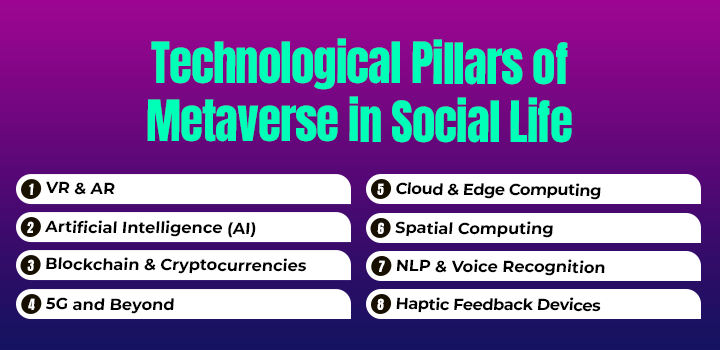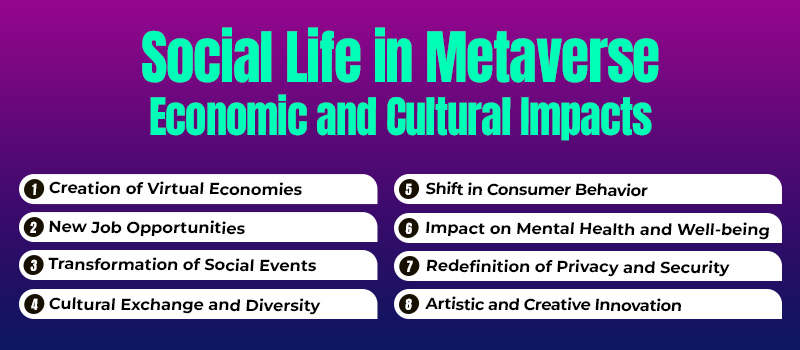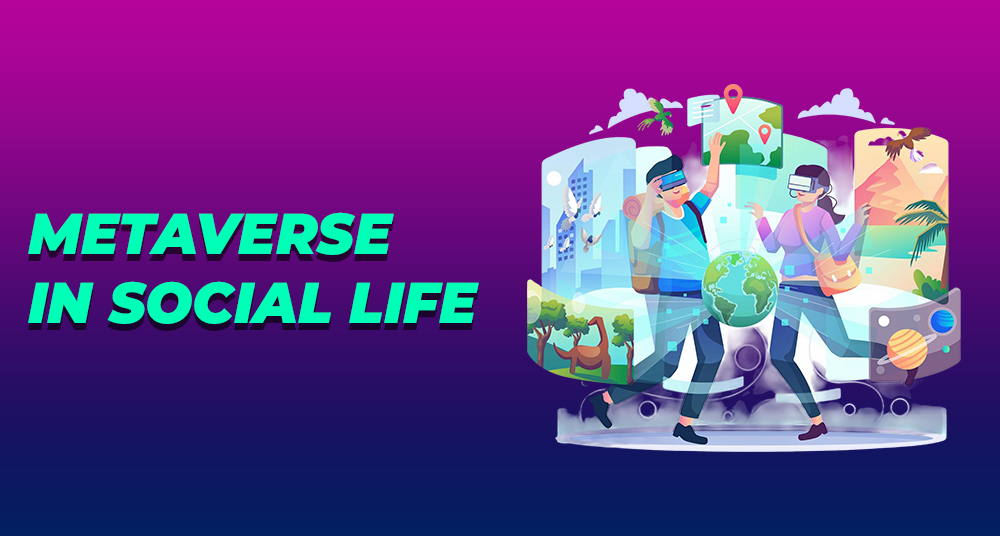As we rapidly approach the third decade of the 21st century, the concept of the metaverse has transitioned from a futuristic vision to a tangible part of daily life. The metaverse in social life is reshaping how people interact, socialize, and experience community, redefining the boundaries of physical and digital realms. By 2030, virtual events, social gatherings, and immersive experiences will no longer be novelties but core aspects of everyday human interaction. This transformation is poised to impact culture, economy, identity, and the fabric of society itself.
In this comprehensive exploration, we will unpack what the metaverse means in the context of social life, examine its growth prospects, delve into the technological underpinnings enabling these new realities, and discuss the profound social, economic, and cultural impacts. Finally, we will look toward the future and consider what lies ahead for the metaverse as a social ecosystem by 2030.
What is Metaverse in Social Life?
The term “metaverse” broadly refers to a persistent, shared virtual universe that seamlessly integrates augmented reality (AR), virtual reality (VR), and the internet into a cohesive digital ecosystem. When applied specifically to social life, the metaverse in social life represents a digital environment where individuals can connect, communicate, collaborate, and build relationships regardless of their physical location.
Unlike traditional social media platforms, the metaverse offers immersive 3D spaces where users navigate virtual environments as avatars, participate in real-time interactions, attend events, and engage in communal activities with a sense of presence and embodiment. It’s a space where physical limitations—distance, time, even the laws of physics—become less relevant, enabling richer social experiences that can be deeply meaningful and inclusive.
Metaverse in Social Life: Growth Projections & Market Size
The growth trajectory of the metaverse in social life is astonishing. According to industry reports, the global metaverse in social market size was valued at approximately $12.57 Billion in 2024 and is projected to exceed $84.82 Billion by 2033, at a CAGR of 25.2% from 2026 to 2033, with a significant portion attributed to social and entertainment applications.
Several factors fuel this explosive growth:
- Advancements in hardware: Affordable VR headsets, AR glasses, and haptic feedback devices are becoming mainstream.
- Network improvements: 5G and soon 6G technologies enable seamless, low-latency real-time interactions.
- Consumer adoption: Younger generations, digital natives, and remote workers are embracing virtual spaces for socialization.
- Corporate investment: Major tech companies and startups are aggressively developing social metaverse platforms.
- Cross-industry integration: Entertainment, gaming, education, retail, and even healthcare sectors are incorporating metaverse experiences.
By 2030, it’s expected that millions of users will regularly engage in metaverse-based social activities, making it a fundamental part of daily social life worldwide.
Technological Foundations of Metaverse in Social Life

The metaverse in social life relies on several critical technological pillars that work together to create immersive and interactive virtual environments. Here are the main components:
Virtual Reality (VR) and Augmented Reality (AR)
VR fully immerses users in digital worlds, while AR overlays virtual elements onto reality, enabling interactive, immersive social experiences within the metaverse.
Artificial Intelligence (AI)
AI enhances metaverse interactions by powering intelligent avatars, automating moderation, personalizing experiences, and generating dynamic content for a safer, engaging social environment.
Blockchain and Cryptocurrencies
Blockchain ensures secure ownership of digital assets, while cryptocurrencies facilitate seamless, decentralized transactions, creating a robust economy within the metaverse’s social spaces.
5G and Beyond
High-speed, low-latency 5G and future networks enable smooth, real-time communication and large-scale social events without delays or interruptions in virtual environments.
Cloud Computing and Edge Computing
Cloud and edge computing deliver the immense processing power needed to render detailed virtual worlds and handle complex social interactions instantly and reliably.
Spatial Computing
Spatial computing allows computers to understand and map three-dimensional spaces, enabling realistic avatar movement, object interaction, and immersive navigation in metaverse social settings.
Natural Language Processing (NLP) and Voice Recognition
NLP and voice recognition support natural, conversational communication between users and virtual assistants, enhancing social engagement and accessibility within the metaverse.
Haptic Feedback Devices
Haptic technology simulates tactile sensations, allowing users to feel virtual touch, making social interactions more realistic and emotionally connected in the metaverse.
Social Interaction and Identity in the Metaverse
The metaverse in social life will fundamentally reshape how individuals interact and express identity. Here are key aspects:
Avatar Customization and Expression
Users can design highly personalized avatars that reflect their unique identities, emotions, and styles, allowing creative self-expression beyond physical limitations, and enabling individuals to experiment with different social roles and cultural representations in the metaverse.
Real-Time Presence and Immersion
The metaverse offers users a strong sense of “being there” with others through real-time, immersive interactions, fostering deeper emotional connections and empathy that traditional social media or video calls cannot fully replicate.
New Social Norms and Etiquette
As virtual interactions increase, communities develop new social norms and etiquette, addressing appropriate behavior, communication styles, privacy expectations, and conflict resolution within these immersive environments to create respectful and enjoyable experiences.
Accessibility and Inclusivity
The metaverse lowers barriers for people with disabilities, language differences, or geographic isolation by providing customizable environments and communication tools, thus promoting greater social inclusion and equal participation in virtual social life.
Persistent Social Spaces
Virtual social spaces in the metaverse are continuous and persistent, allowing relationships and communities to develop over time within shared environments, unlike temporary chats or meetings that disappear once the session ends.
Blending of Virtual and Physical Identities
Users can blend their physical-world identities with virtual personas, creating hybrid identities that evolve dynamically, enriching social experiences and allowing people to explore and express multiple facets of themselves across different contexts.
Economic and Cultural Impact of Metaverse in Social Life

The emergence of the metaverse in social life is poised to influence economy and culture profoundly.
Creation of Virtual Economies
The metaverse in social life enables users to buy, sell, and trade virtual goods, creating thriving digital economies. This fosters entrepreneurship and new income streams, revolutionizing how people engage with commerce and social interaction online.
New Job Opportunities
Emerging roles such as virtual event coordinators, avatar designers, and digital moderators arise, expanding employment opportunities in technology and creative sectors tied to evolving virtual social environments.
Transformation of Social Events
Conferences, concerts, and celebrations increasingly occur in virtual spaces, reducing geographic and physical barriers while enhancing accessibility and global participation in social gatherings.
Cultural Exchange and Diversity
Digital social platforms encourage cross-cultural interactions, enabling people worldwide to share traditions, ideas, and arts, enriching mutual understanding and celebrating global diversity.
Shift in Consumer Behavior
Users increasingly spend on virtual goods and experiences, influencing marketing strategies and creating new economies centered on digital lifestyle products within immersive social environments.
Impact on Mental Health and Well-being
While offering meaningful social connections, the metaverse in social life also presents challenges like digital addiction and identity stress, requiring thoughtful mental health strategies and moderation tools to ensure healthy user experiences.
Redefinition of Privacy and Security
Protecting personal data and virtual identities becomes critical, prompting new security measures and policies to ensure safe and trustworthy online social experiences.
Artistic and Creative Innovation
Artists and creators explore immersive storytelling and interactive performances, redefining cultural expression and expanding the scope of creativity in digital social realms.
The Future of Metaverse in Social Life
Looking ahead to 2030, the metaverse in social life will be a dynamic and integral part of human interaction. Social platforms will be deeply immersive, accessible via lightweight devices, and tightly integrated with everyday life. Virtual events will rival physical ones in scale and emotional impact. The lines between online and offline communities will blur, as hybrid experiences become the norm.
Governments, corporations, and civil society will need to collaborate on regulating and guiding the metaverse to ensure it promotes equity, privacy, and mental well-being. Ethical frameworks will emerge to govern virtual conduct and economic activity.
Ultimately, the metaverse’s social potential will be realized not only through technology but through how humans choose to connect, create, and coexist in these new digital worlds.
Synarion IT Solutions Empowering Social Connections through Metaverse Technology
Synarion IT Solutions is revolutionizing social interactions by harnessing advanced metaverse technology. By creating immersive virtual environments, they empower people to connect, collaborate, and share experiences beyond physical boundaries. Their innovative solutions unlock new possibilities for meaningful social connections, transforming how communities engage in the digital age.
Final Thoughts
The metaverse in social life is more than a technological innovation—it is a profound evolution in how humans experience community, identity, and culture. By 2030, the virtual social universe will be a vibrant, immersive, and essential extension of our reality, enabling new forms of expression, collaboration, and connection. While challenges remain, the possibilities for enriched human interaction are boundless. As we step into this brave new world, embracing the metaverse’s social potential with thoughtful stewardship will unlock unprecedented opportunities for society at large.
Useful Resource: Metaverse in Real Estate






What do you think?
It is nice to know your opinion. Leave a comment.